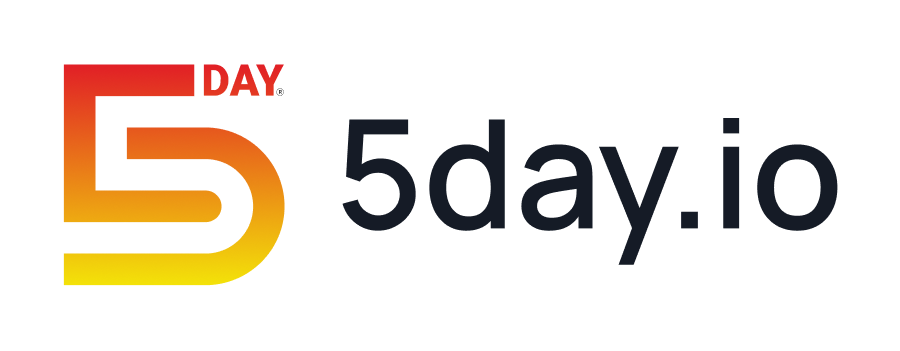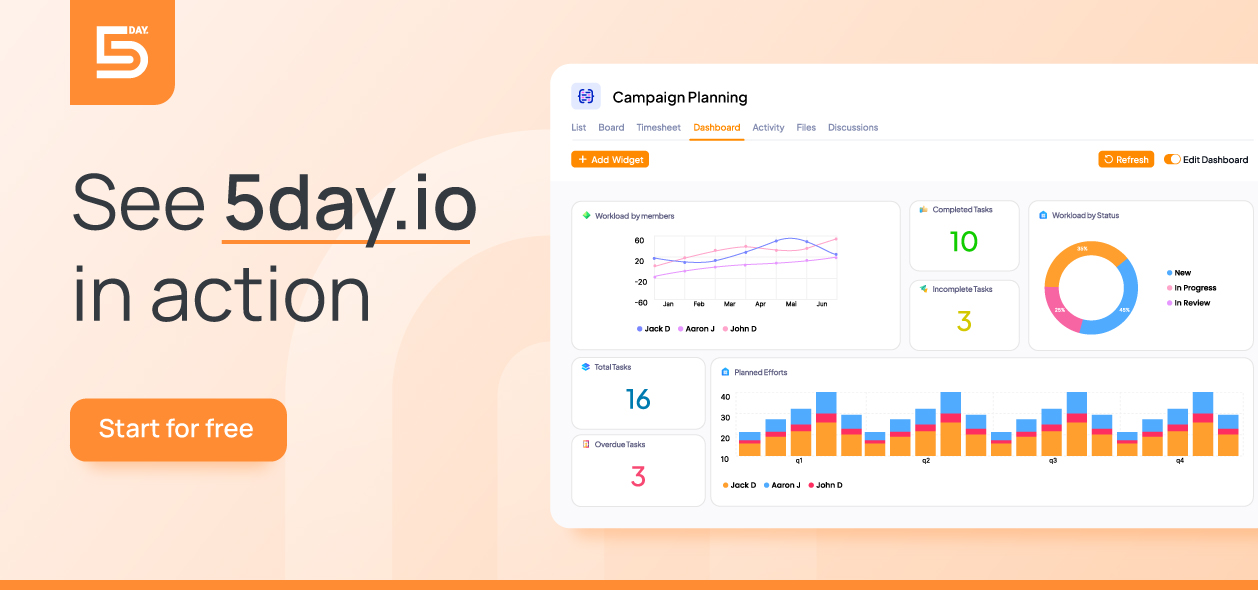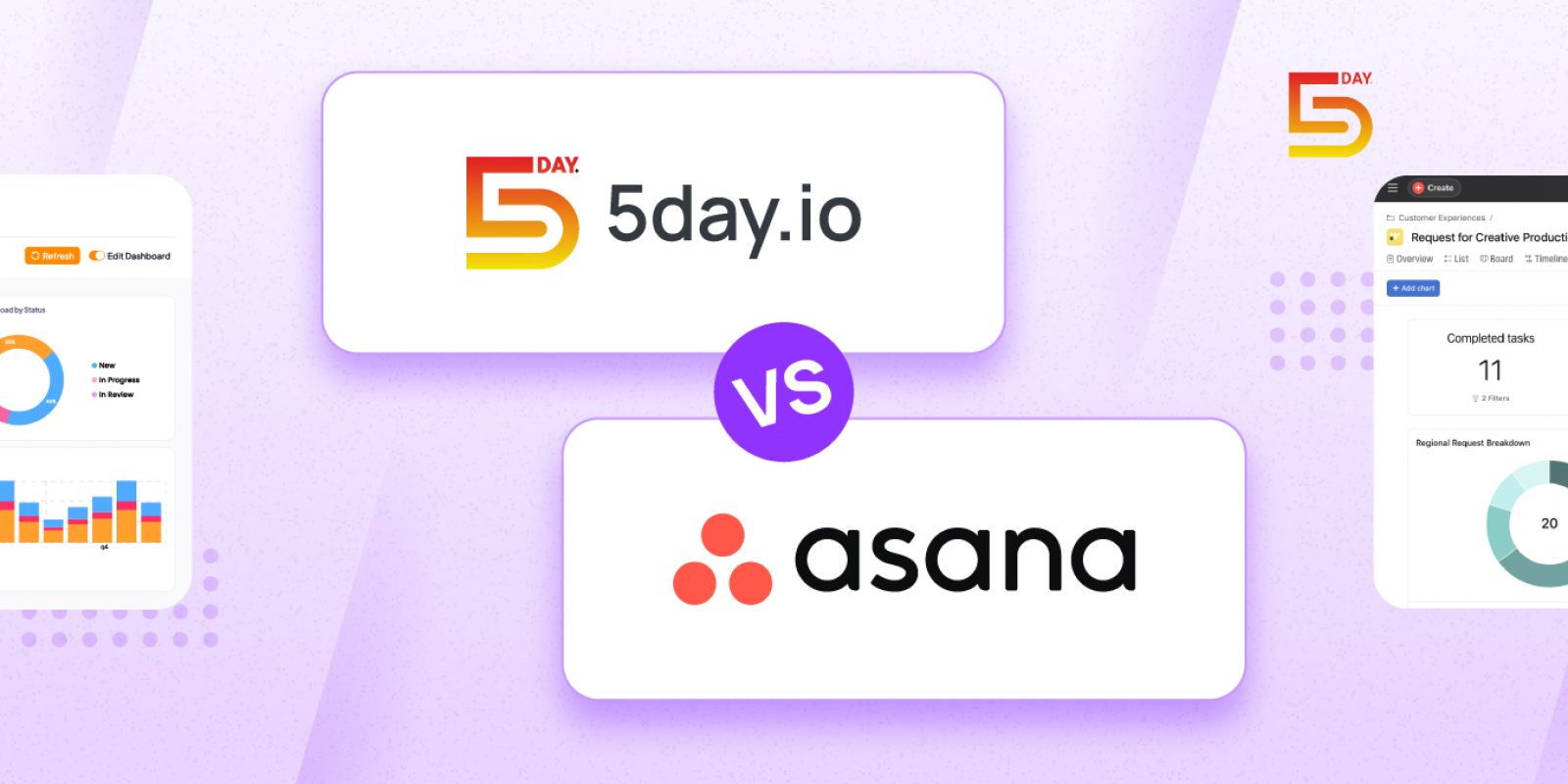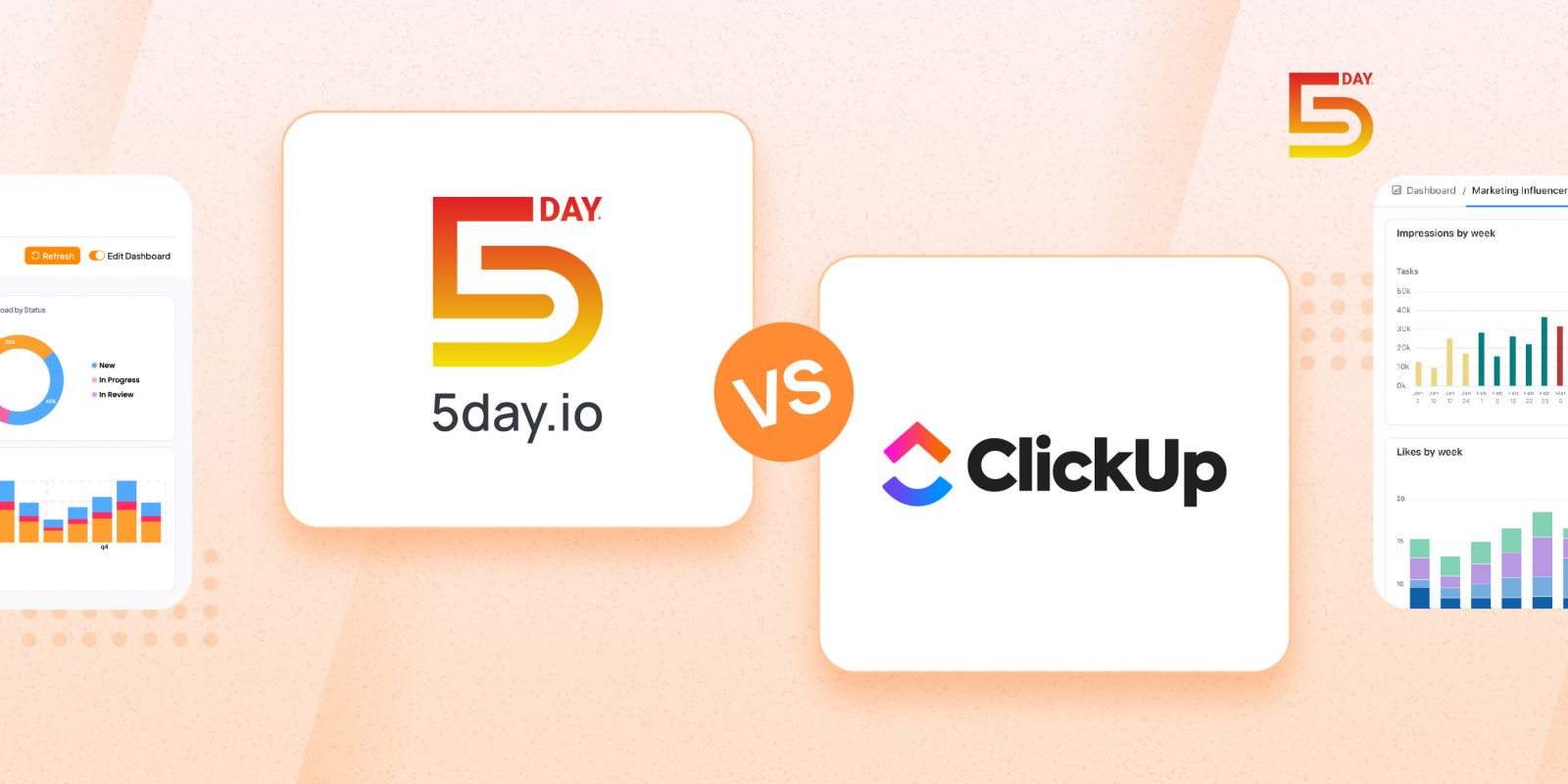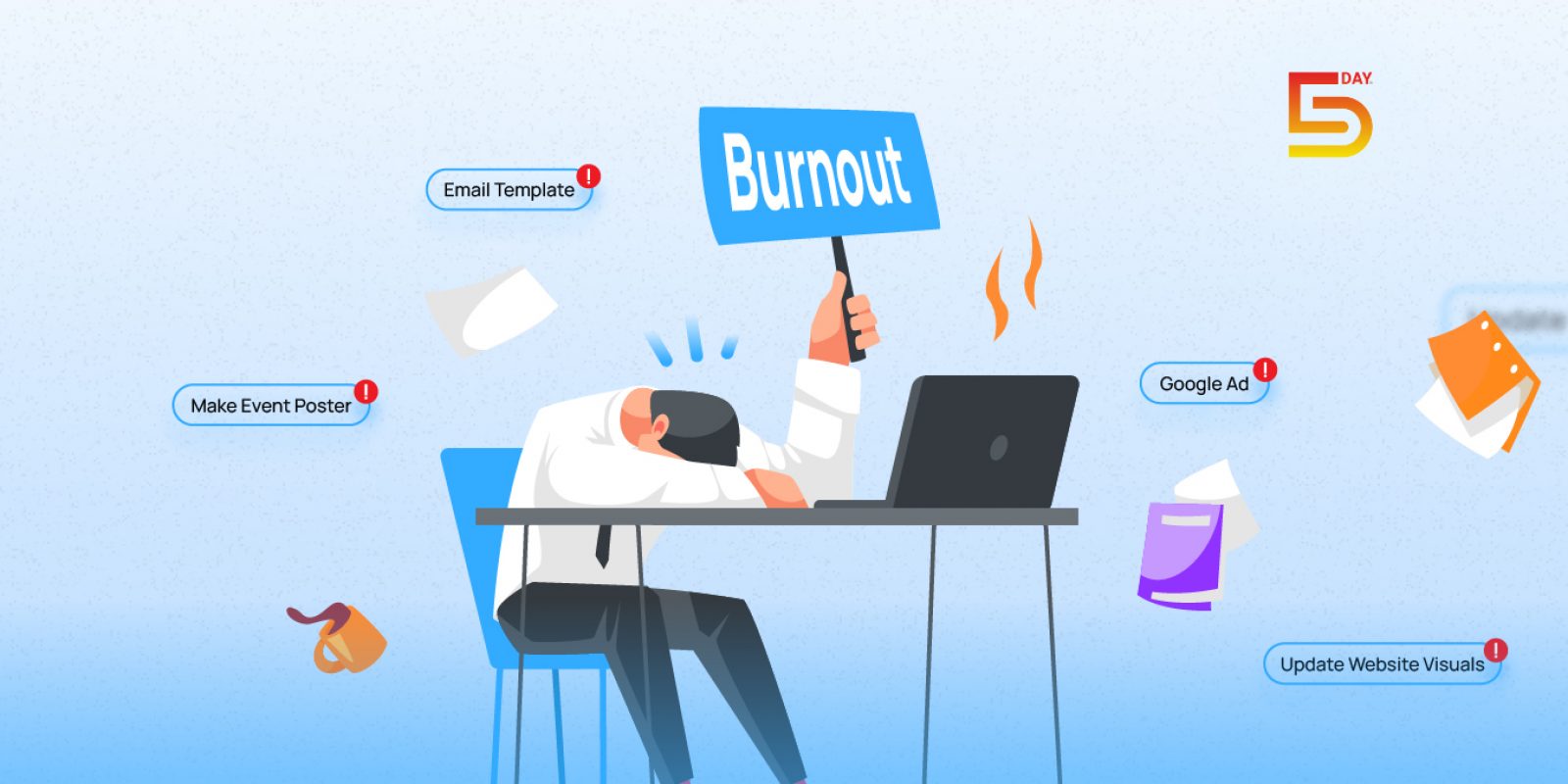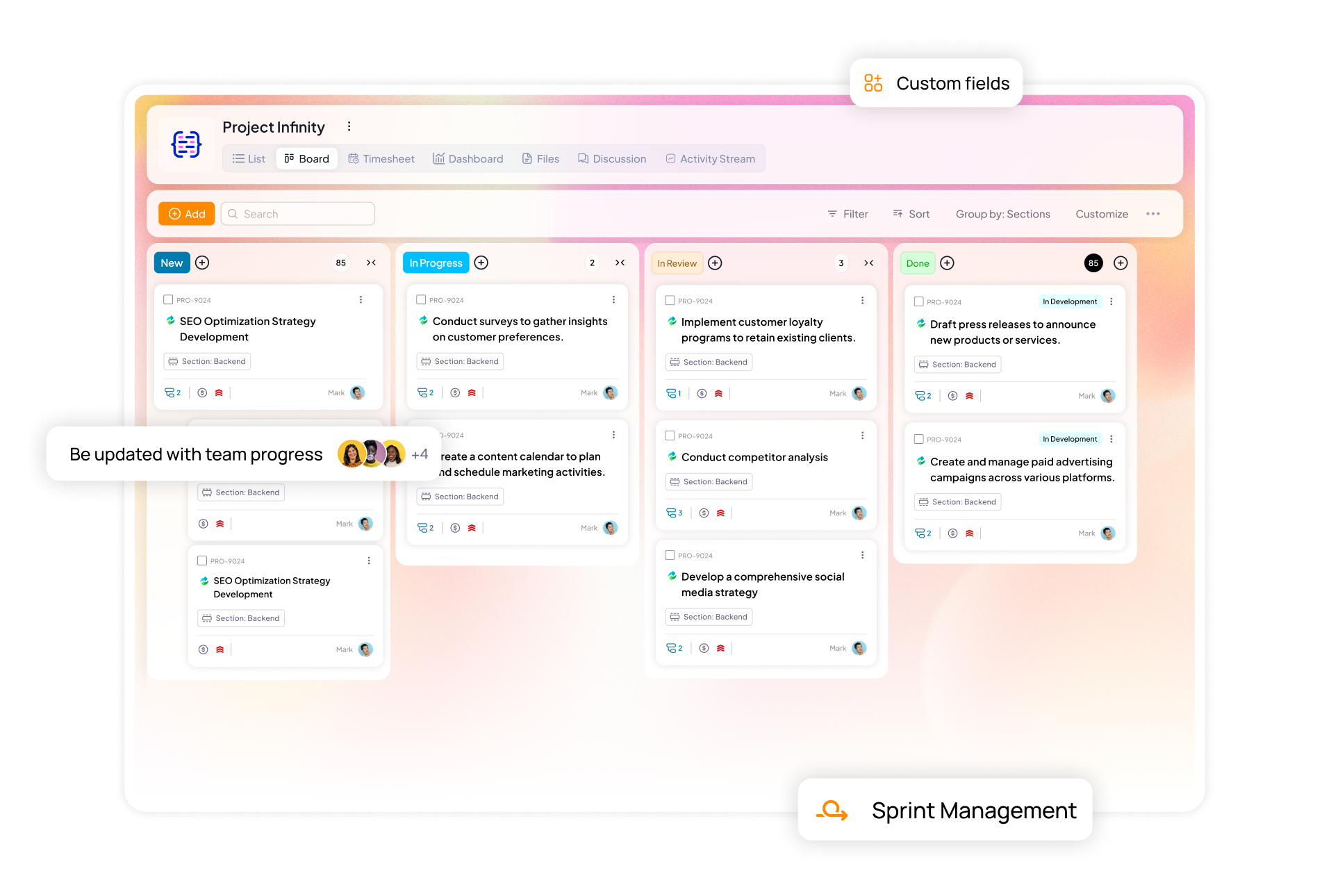Most tools in the market are either too complicated for daily use or too generic to meet the demands of a marketing agency. That’s why agencies need a solution like 5day.io. Built with their specific challenges in mind, something that brings structure without slowing them down.
Designed to match the rhythm of marketing teams, 5day.io helps agencies grow smarter.
From organizing campaigns and streamlining collaboration, 5day.io gives growing agencies exactly what they need in a simple, and reliable way to scale.
What makes 5day.io different from other project management tools
5day.io naturally mirrors the structure and complexities of marketing work, enabling agencies to operate exactly as they do, without forcing them to conform.
Deep customization
The platform empowers agencies to tailor every aspect of their workflows to exactly match how they do business. Users can customize task types and automate workflows with highly configurable triggers and conditions. This deep customization ensures workflows fit perfectly with agency processes.
Teams can create recurring tasks and define detailed project roles and permissions so that every step of their unique workflow is supported without manual overhead.
Advanced time management
Unlike many traditional project tools with limited time tracking, 5day.io provides detailed categorization of time entries including billable, non-billable, overtime, internal time off.
Teams can log time via single entries or bulk updates, and timesheets undergo approval cycles to ensure accuracy before client billing. The platform also aids managers to balance workloads across projects effectively, improving delivery consistency. This is a crucial reason why marketing agencies need project management software.
No clutter interface
Despite the power and flexibility, 5day.io maintains a clean interface that reduces cognitive load. The platform surfaces only relevant information contextually, depending on the user’s role, project phase, and current task.
Its intuitive design incorporates drag-and-drop interactions, inline editing, contextual menus, and unobtrusive notifications, so users can update tasks quickly and efficiently without overwhelming menus or cluttered dashboards.
Multiple workspaces and project management
5day.io for marketing agencies allows you to manage complexity at scale by enabling the creation of multiple distinct workspaces. Each workspace can represent a client, team, department, or business unit, with its own set of projects, task views, user permissions, and workflows.
This separation keeps work organized and prevents information overload.
Within each workspace, agencies can create, duplicate, and organize projects, subdividing them into sections and sprints tailored to project lifecycles. The platform supports easy switching between workspaces and projects.
Accessibility anywhere
The platform offers robust support for modern, flexible working environments. Native mobile apps for iOS and Android enable team members to manage tasks, track time, upload files, and communicate on the go. Offline mode ensures no loss of productivity when internet access is limited or unavailable, syncing changes automatically once connectivity is restored.
Users managing multiple clients or organizations benefit from multi-account support and one-click switching for efficient navigation across diverse projects.
6 Reasons why using 5day.io in marketing agencies is a lifesaver
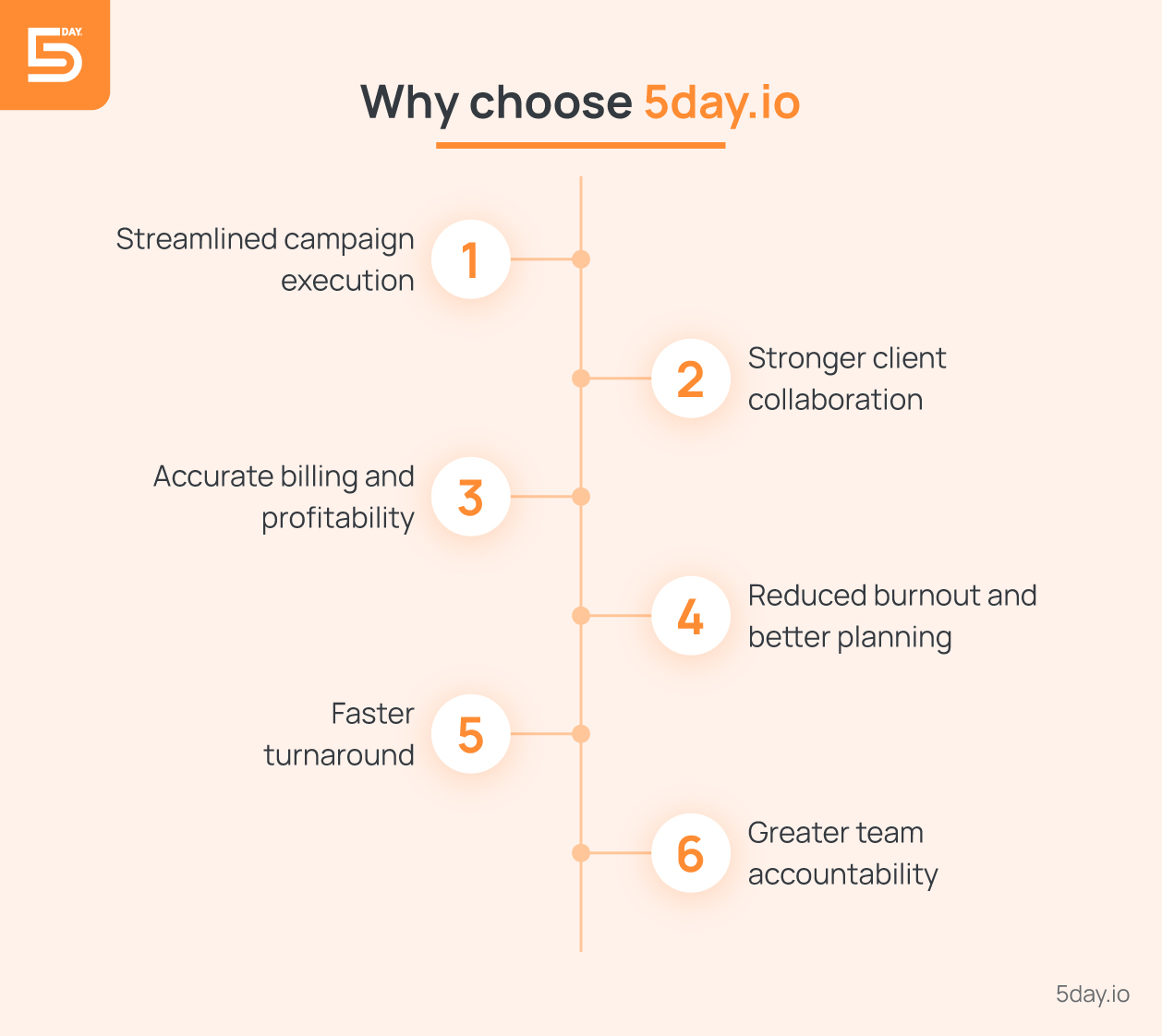
What sets it apart is how it delivers real, measurable improvements in everyday agency work.
Streamlined campaign execution
![]()
Project managers understand that campaigns rarely progress in a linear fashion. Each initiative encompasses a complex mesh of interdependent deliverables right from creative assets, media buys, client feedback, performance monitoring, and iterative refinements.
5day.io excels at decomposing this complexity with a granular yet flexible structure. How it works is projects can be broken down into sections, tasks, and sub tasks, allowing precise scoping at every level.
This fine-grained control in your marketing project management tool allows managers to assign multiple contributors where needed, and sequence interrelated tasks with dependencies that prevent bottlenecks.
With 5day.io, switching between big-picture planning and detailed task management feels effortless. Visual dashboards provide leaders with real-time status updates, allowing both detailed daily management and high-level strategic oversight. Project templates make life even easier; you can reuse them to save hours of setup and keep every campaign running smoothly. Additionally, you can attach files and add documentation right inside tasks, so everyone always works from the latest information without digging through endless emails or folders.
For experienced project managers, 5day.io takes the chaos out of managing campaigns and turns it into a clear, and scalable rhythm.
Read Also: Task Management Strategies for Marketing Teams
Stronger client collaboration
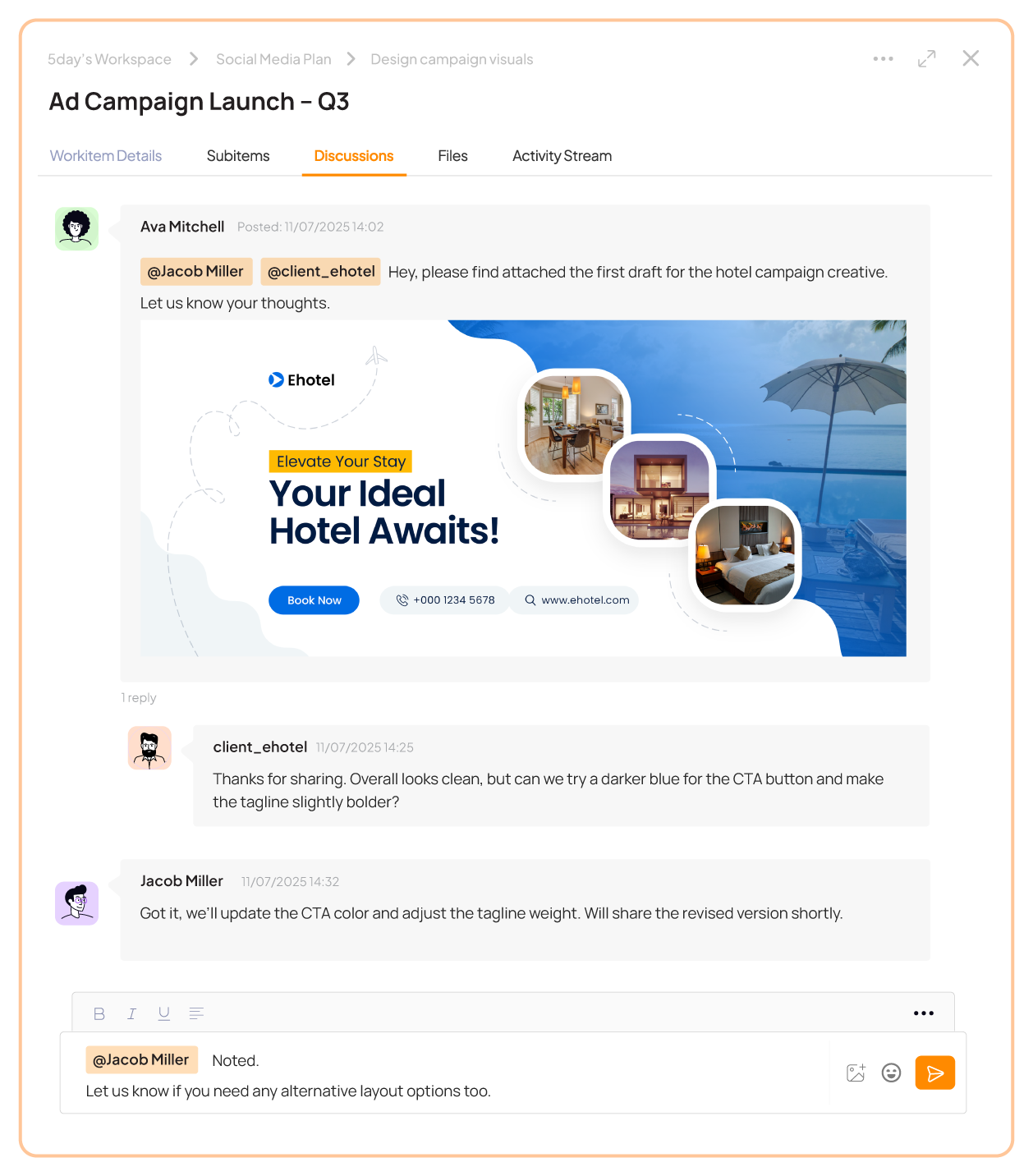
Every project manager knows client collaboration can make or break a project. But relying on endless email threads, and random approval processes usually just leads to confusion.
That’s where 5day.io makes a big difference.
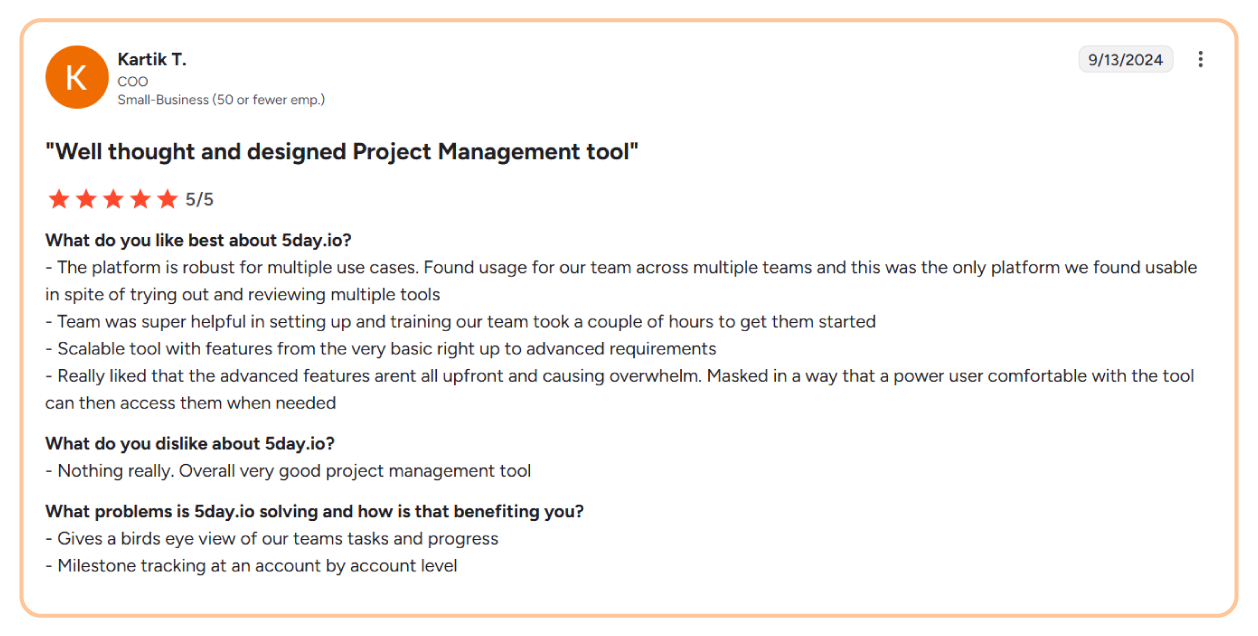
Instead of letting clients poke around everywhere, it gives them access only to the parts of the workspace that matter to their role. Clients can drop comments in real time, tag the right people, and have discussions right where the work happens. This removes miscommunication or chasing down for missing feedback.
Notifications and gentle nudges in the marketing agency project management software handle the follow-ups, so your team doesn’t waste time sending reminders. And here’s the best part: every interaction gets logged in a clear audit trail. That means no more “he said, she said” during scope creep disputes.
Accurate effort tracking to anticipate profitability
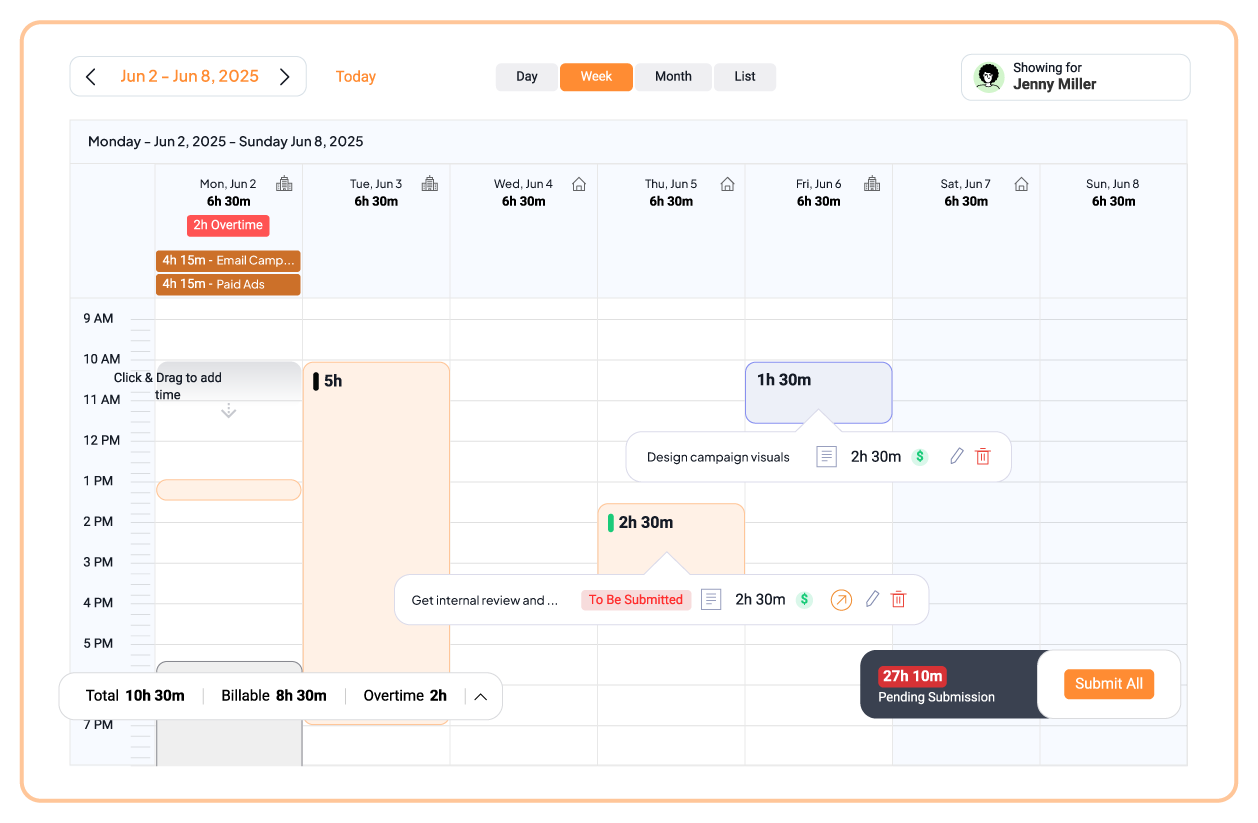
With 5day.io, time tracking becomes simple and precise. You can log hours however you prefer, by task, in one entry, or in batches and tag them as billable, non-billable, internal, or overtime. Nothing slips through.
Managers can create multi-step approval workflows that ensure accuracy without holding up progress. Plus, real-time dashboards show exactly where capacity is stretched, and whether projects are staying profitable. This makes it easy to catch inefficiencies and scope creep before they start eating into revenue.
With this level of clarity, project managers can stay ahead and build a healthy time-tracking culture. Instead of relying on guesswork, agencies gain a real strategic edge that protects and grows their margins.
Reduced burnout and better planning
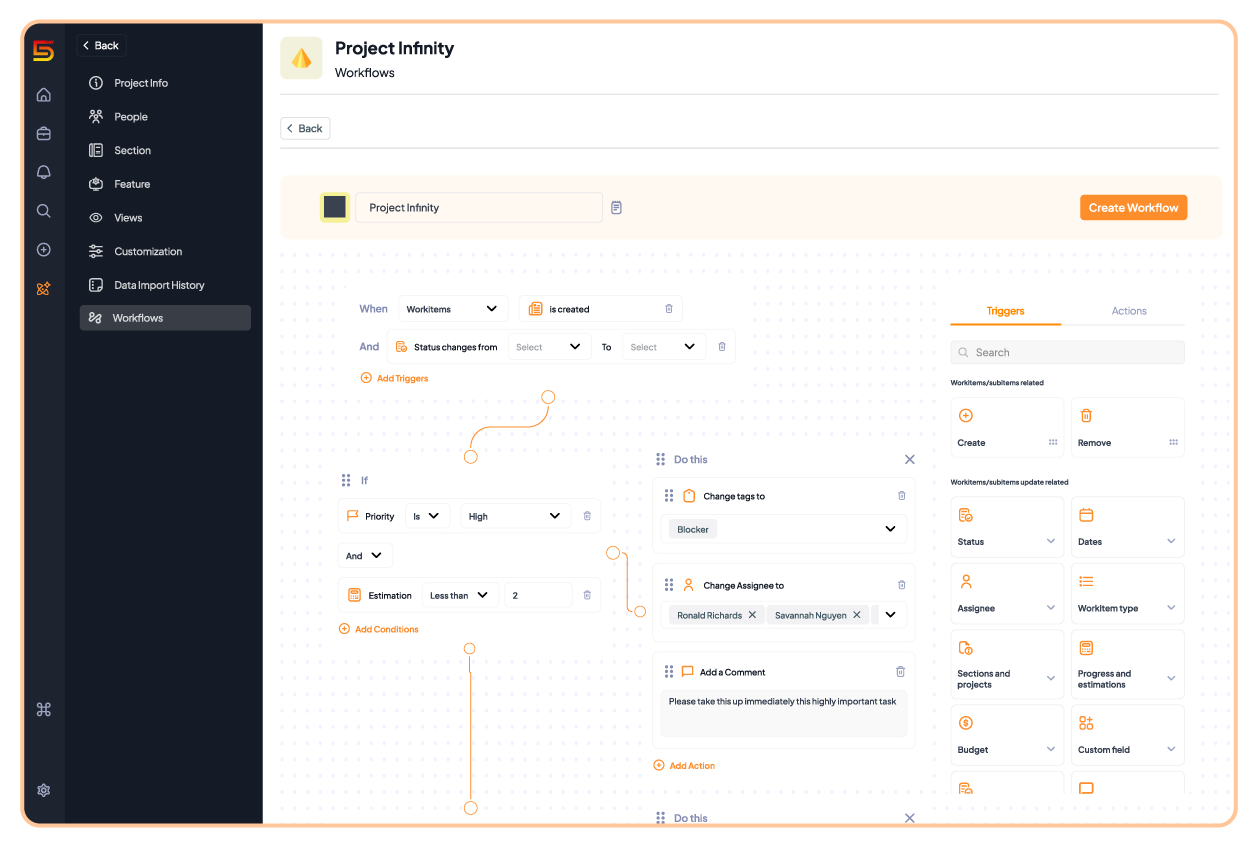
Agencies thrive when they deliver on time and protect their teams from burnout. 5day.io helps project managers maintain that balance by giving clear visibility into workloads, so they can quickly identify where people are stretched or underutilized, even across distributed teams.
You can also automate routine tasks such as reminders, and approvals, reducing the noise that clogs daily operations. With calendars, availability, and leaving all in one place, staffing and scheduling become straightforward.
This clarity creates an environment where teams avoid burnout and maintain a healthy rhythm.
Faster turnaround
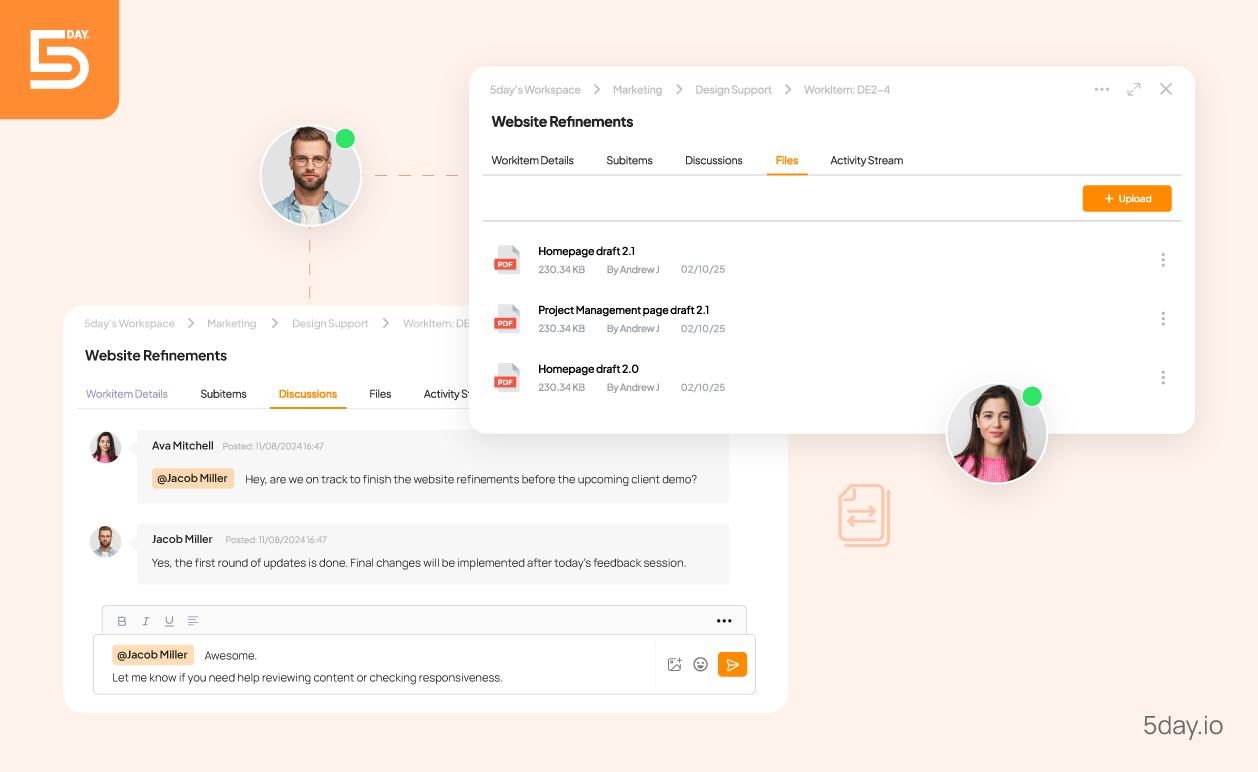
Disconnected files and unclear task statuses can drag projects down. 5day.io keeps everything in one place, right from files, discussions, tasks, timelines, and approvals, so the entire workflow feels easy to manage.
Automatic alerts and reminders make sure no task slips through the cracks. Workflow gates keep quality in check by ensuring work is complete before it moves forward. Project managers can switch between daily, weekly, or monthly views to spot risks early and step in with the right support. With these built-in controls, 5day.io keeps projects reliable while still giving creative teams the flexibility they need.
Read Also: How to Manage Tasks and Timesheets on 5day.io?
Greater team accountability
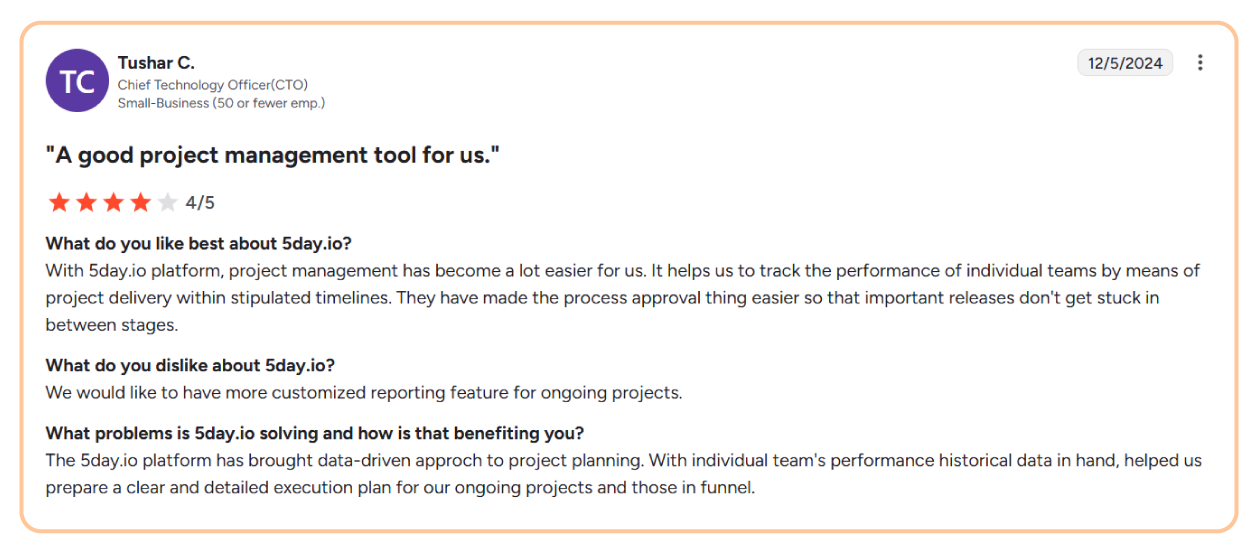
5day.io brings files, discussions, tasks, and timelines into one connected platform, and gives everyone a single, easy place to work from.
Instead of letting tasks linger unnoticed, automatic alerts and reminders keep the team on track. Structured workflow gates ensure that quality checks happen at the right moments. For project managers, the ability to view progress across daily, weekly, and monthly timelines means support can be given exactly where it’s needed.
This combination of clarity and control creates a smooth flow across projects. Teams don’t waste time switching between tools or second-guessing what’s next. Clients see the difference too: projects move faster, and delivery feels consistent and reliable.
What happens if you don’t have the right project management tool in place?
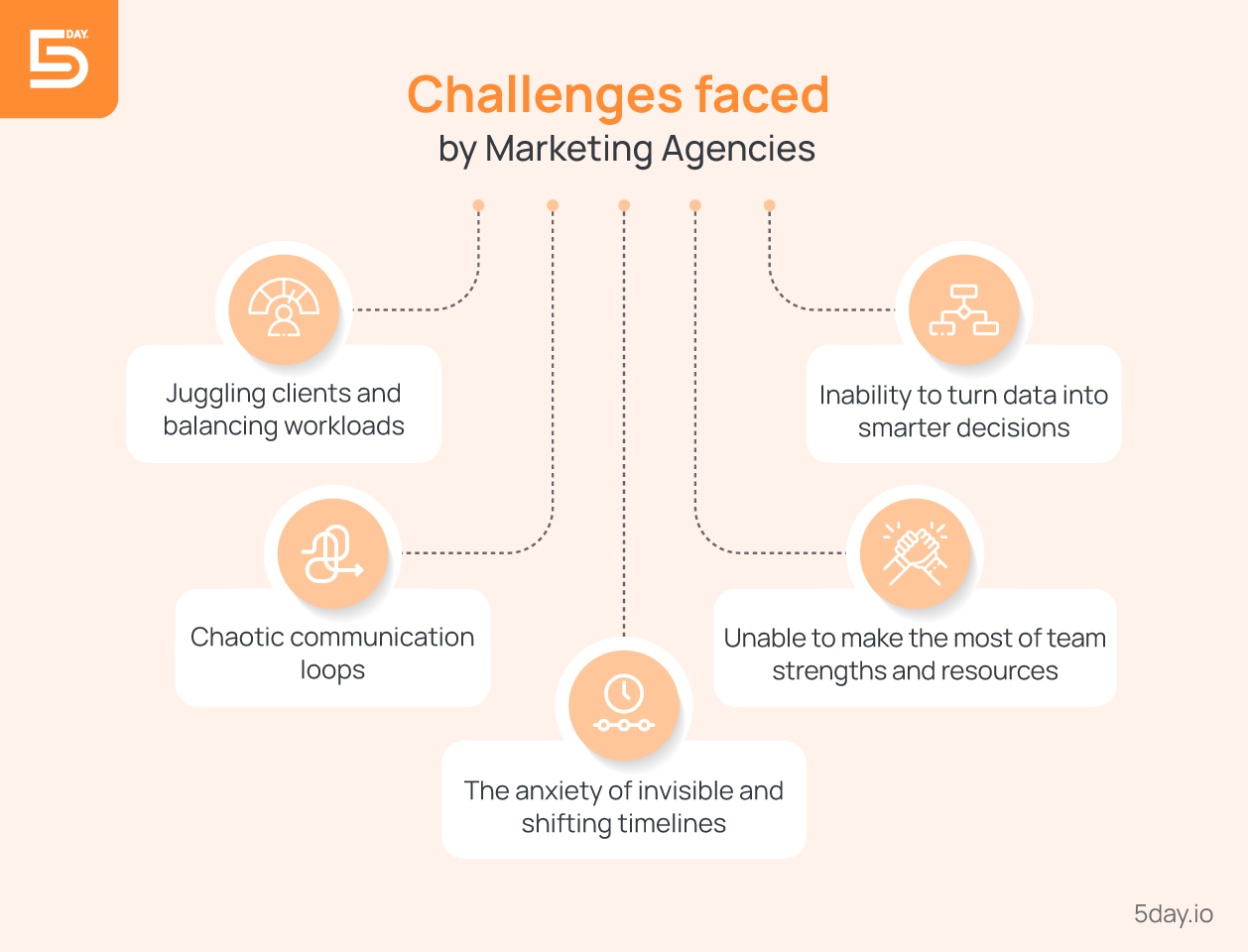
Juggling clients and balancing workloads
Agency life is a balancing act on a wire. You’ve got five clients, and twenty urgent requests all landing at once. Every client swears their project should come first and somehow you’re the one keeping the whole show from collapsing.
Even the most capable teams, seasoned professionals who have been through countless campaigns, eventually feel the strain. The toll shows up on laptops that don’t close until midnight, and that gnawing worry that something critical is slipping through the cracks. You need to protect people who care enough to stretch and to push through.
A project management tool does this neatly.
By bringing every task, and update into one place, it removes the guesswork that eats away at energy. Teams don’t have to chase emails or and can handle priorities effortlessly.
Chaotic communication loops
By the time the team pieces together all the scattered feedback, the context has shifted and so has the client’s mood. Every project manager knows this frustration: you’re reviewing a deliverable for the third time and realize the changes weren’t wrong, they were just based on an outdated request. The client thinks you’re not listening, and the team feels like they’re running in circles. This is exactly where best project management software for marketing agencies changes the game.
Instead of chasing updates across emails and spreadsheets, all communication and feedback live in one central place linked directly to the task or deliverable it belongs to. Everyone sees the latest version, the most recent comments, so there’s no confusion about what’s current and what’s outdated.
Read Also: How Project Management Software Solves Communication Breakdowns
With this kind of clarity, projects stop spinning in circles.
The anxiety of invisible and shifting timelines
The team’s working hard, no alarms are ringing. Then out of nowhere, you realize a key deadline is only days away, and somehow, you’re already behind.
The real issue is visibility.
Without clear milestones and timelines that everyone can see, problems stay hidden until they blow up. Features like Gantt charts and milestone trackers solve this by mapping out every task, and project dependency in a way that’s easy to grasp.
Unable to make the most of team strengths and resources
When someone’s strengths line up perfectly with their tasks, they deliver their best work, while also going above and beyond.
But when the balance is off, you’ve got one person drowning in deadlines while another is underused, and that’s a recipe for frustration. This is where tools made exclusively for project management for marketers really help.
They give you a clear picture of who’s doing what, and how much they already have on their plate. And with built-in time tracking, you can spot overload early. The difference it makes is huge.
Instead of a team just pushing through on fumes, you’ve got people working at a steady pace, doing the kind of work they’re actually good at.
Inability to turn data into smarter decisions
Modern marketing generates a flood of data, but without the right tools, it can feel more confusing than helpful. The real power lies in transforming that data into insight. When marketing project management tools pull everything together and translate raw numbers into clear, visual insights, the fog lifts.
Suddenly, you can see where the budget is going, and how performance is tracking against the goals that matter.
This shift, from drowning in data to steering with insight is what makes the difference. Leaders get the big-picture view to make smarter calls about strategy and resourcing.
How to choose the right project management tool for marketing agencies
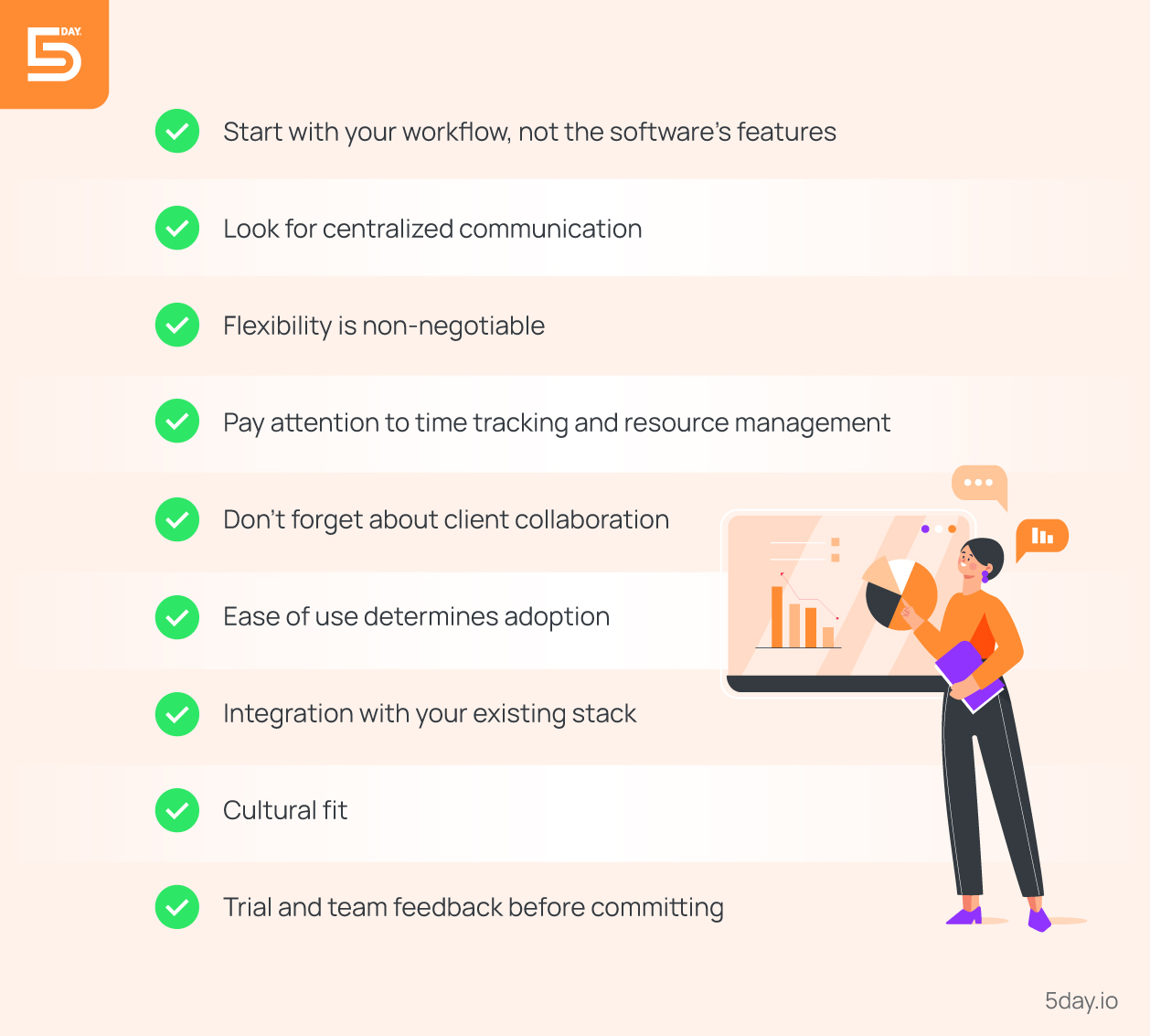
This requires thoughtful consideration across several critical factors. With so many options on the market, it’s essential to pick marketing agency collaboration software that not only fits current needs but also adapts to the unique ways your agency operates.
Here’s a detailed guide to help make that choice more straightforward.
Start with your workflow, not the software’s features
Maybe you juggle social media campaigns, client ads, SEO projects, content calendars, and creative production all at once. Or maybe you run fewer, bigger, high-budget campaigns that require layers of approvals and collaboration. The key is to map out how your projects actually flow today, where things usually get stuck, where you lose time, and what your team finds most frustrating.
Do you waste hours chasing client approvals? Do tasks get lost in endless email threads? Are deadlines missed because everyone’s using a different tool to track progress? Once you have clarity on your pain points, you’ll know what features to prioritize.
Look for centralized communication
If feedback is buried in email, task updates are in Slack, files are in Google Drive, and timelines are on yet another tool, you’re constantly piecing things together instead of moving forward. The right tool on project management for agencies should pull all of that into a single space, tasks, comments, files, timelines, and approvals, so nobody has to wonder where to look for the latest version or instruction.
This saves your team’s mental energy and cuts down delays that come from miscommunication.
Flexibility is non-negotiable
Creative teams don’t thrive in rigid, one-size-fits-all systems. You need a tool that adapts to different campaign types. For example, your design team might need a visual Kanban board, while your content team prefers list or calendar views.
Your account managers might want timeline views to update clients on delivery. A good tool doesn’t force everyone into the same mold, it lets each team view and manage work in the way that makes sense to them, while still keeping everything connected.
Pay attention to time tracking and resource management
Billable hours slip through the cracks, and projects go over budget because no one saw the warning signs early. A strong project management tool should include built-in time tracking that’s easy to use, along with workload views that show who’s overbooked and who has capacity. This visibility helps managers balance workloads fairly and spot burnout risks before they become serious problems.
Plus, when time tracking ties directly into reporting, you get a clearer picture of profitability across campaigns.
Don’t forget about client collaboration
If your project management tool doesn’t include clients in a structured way, you’re going to spend half your life chasing approvals in email threads. The best tools give clients-controlled access so they can review and comment directly in the workspace, without overwhelming them with irrelevant details. That way, collaboration becomes smoother and far less stressful.
Ease of use determines adoption
It doesn’t matter how powerful a tool is, if your team finds it clunky or confusing, they won’t use it consistently. That’s when you end up back in the same mess of half-adopted tools and scattered communication. When evaluating software, pay attention to the interface, and how quickly a new team member could learn the ropes. Ideally, the tool should feel intuitive enough that adoption doesn’t become a project in itself.
Integration with your existing stack
No tool lives in isolation. Agencies already rely on tools like Slack, Google Drive, Dropbox, Canva, Figma, HubSpot, or CRMs. Your project management tool should connect seamlessly with the systems you use daily. Otherwise, you’ll end up with the same old problem: hopping between disconnected apps.
Cultural fit
This one’s underrated. The tool you choose shapes how your team collaborates. A rigid, overcomplicated tool can frustrate and alienate your creatives. A tool that balances structure with flexibility reinforces the culture you want, whether it’s accountability, or agility. In other words, you’re not just choosing software, you’re reinforcing values.
Trial and team feedback before committing
Finally, never buy based only on a demo. Put the tool into real-world use with a pilot team or on a smaller project. Ask your team what they love, and what slows them down. Adoption is much smoother when your team feels they’ve had a say in the decision.
Sign up for a 3-month free trial with 5day.io to see the tool’s multifarious capabilities and how you can put them to good use right away.
Frequently Asked Questions
How is 5day.io different from other project management tools like Wrike, Asana, or Trello?
Unlike generic tools, 5day.io is built with marketing agencies in mind. It focuses on campaign planning, and client reporting, removing the clutter of features agencies don’t need while doubling down on the ones they rely on every day.
Can 5day.io handle multiple clients and campaigns at the same time without confusion?
Yes. 5day.io is designed for agencies juggling multiple accounts. You can organize projects by client, campaign, or deliverable, making it easy to see who’s working on what and ensuring deadlines never slip through the cracks.
Does 5day.io integrate with tools agencies already use (like Slack, Google Drive, or CRMs)?
Absolutely. 5day.io connects seamlessly with popular collaboration, storage, and communication platforms, so your team doesn’t have to switch between tabs. It fits right into your existing workflow instead of forcing you to build a new one.
Is 5day.io scalable as the agency grows?
Yes. Whether you’re a five-person team or a hundred-employee agency, 5day.io scales smoothly. You can start small, then expand features and user access as your agency brings in more clients and bigger campaigns.
What kind of support and onboarding does 5day.io provide for new teams?
5day.io offers personalized onboarding, video tutorials, and responsive customer support. Your team can hit the ground running with minimal downtime, and you’ll always have help when you need it. You can also get white glove support for migration and account set up. Simply reach out to our team on hello@5day.io
